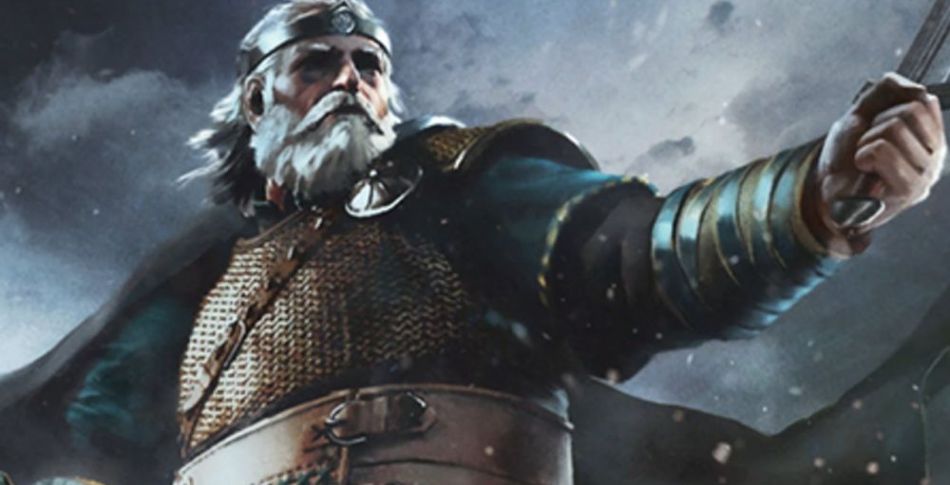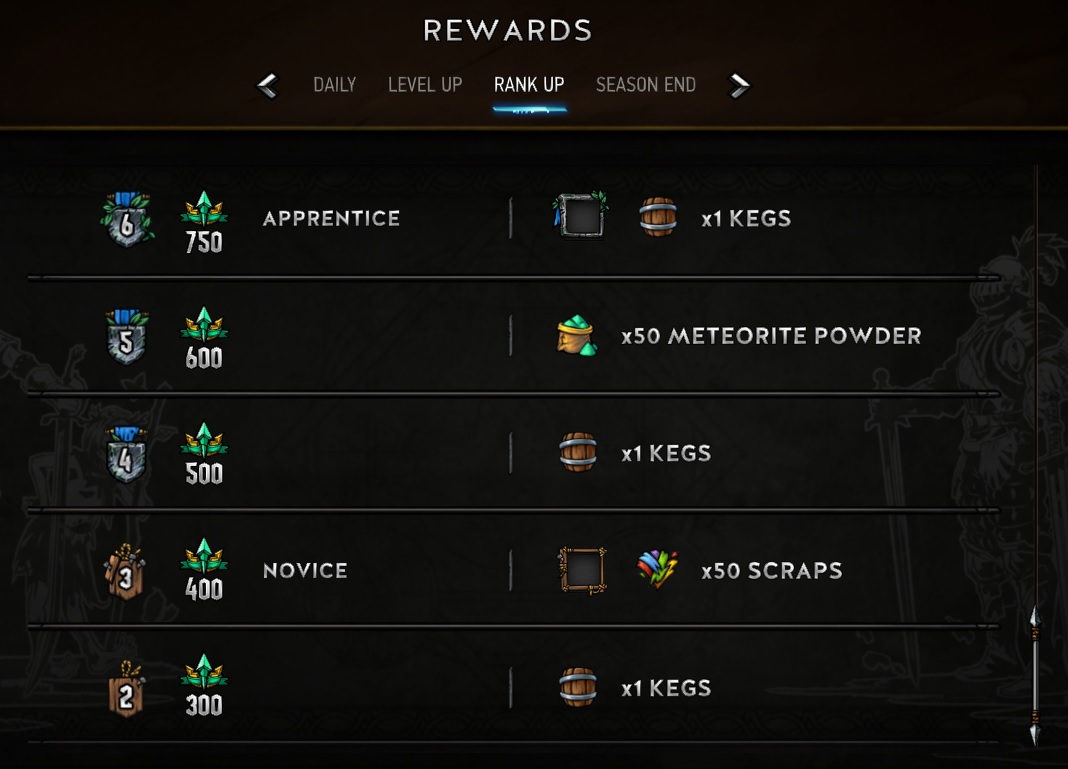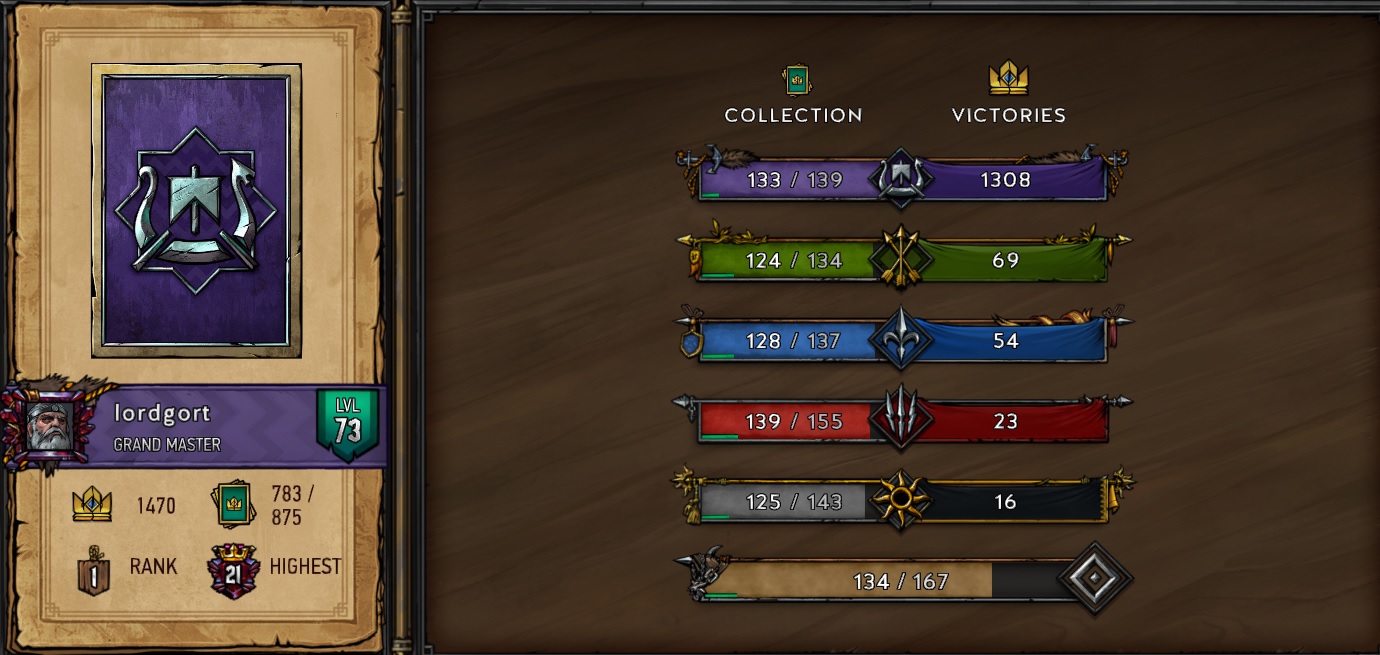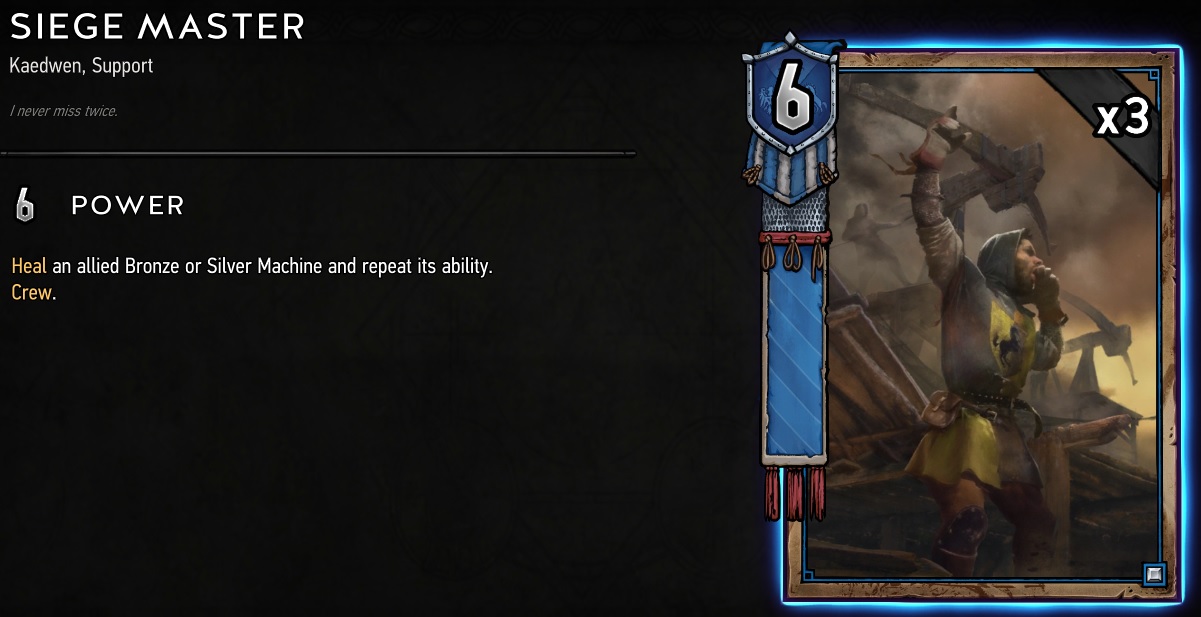

From Zero to Pro: Getting into Competitive Gwent
While the rules for qualifying are simple — reach the top rank of 21 in Ranked Play and you'll join the Pro Ladder at the start of the next Pro Ladder season — the best way to achieve that goal is less obvious. Here are the five key stages.
Stage 1: Welcome to Ranked Play
As soon as you hit Level 10 on your account, once you've finished the introductory challenges or soon after, start playing on the Ranked Ladder. Like other online card games such as Hearthstone, Gwent provides Ranked Play rewards that simply aren't available in casual matches. Unlike most other card games, Gwent gives out rewards twice, as you achieve new ranks and at season's end, and those rewards start as early as your first rank-up.

It's a struggle early on to build decks like the ones your favorite streamer plays, especially if you don't spend money on card kegs. Every keg, every batch of scraps is precious. The Ranked Play Matchmaking Rating (MMR) system is incredibly forgiving at lower ranks — it takes a while before you start to lose any rating points for a defeat, and for a long time after that, the losses are trivial relative to the gains for victories. Further, the Ranked Play rewards reset at the start of each month-long season!
Just jump in. You'll lose a lot, but you'll learn a lot, and the rewards along the way will be crucial for reaching the next stage.
Stage 2: The First Fully Powered Deck
As you go through the introductory challenges and learn more about Gwent, you'll find certain factions, leaders, and decks make more sense to you than others. This is normal, and also a good indicator of what deck you should craft first. Like every other player, you bring a unique set of skills and experiences to Gwent, all of which can influence your initial understanding of a deck and the rate at which you master its details.
Create a list of your potential strengths, such as "experienced with other card games" or "fast at mental calculations." Even "knows a lot about The Witcher franchise" counts early on, as it can help with remembering what cards do; if you know the Trial of the Grasses from a book you read or a game you played, the Gwent card Trial of the Grasses makes sense, even though it's wordy.

Use your list of potential strengths and your research on top Gwent decks to choose your first fully powered deck. Focus on established decks from top players; eventually you'll start modifying decks and even building your own new archetypes as cards are released or changed, but in Stage 2, you don't have the knowledge to do either effectively, so stick with what's been proven to work already.
After several dozen games, you should be comfortable with your first fully powered deck, able to hold your own with players in the middle ranks. Maybe it feels amazing and you're zooming up toward the higher ranks. If so, that's great! Either way, it's time to pause and think.
Stage 3: Building a Broad Base
Gamers have a keen sense for how to gain an advantage. In the context of Ranked Play, likely you've already figured out that, because there's only one MMR used for Ranked Play, the best way to reach the Pro Ladder is to specialize in one deck. This is true, but it's also a trap that can stunt your overall development as a Gwent player.
Going all-in on one deck doesn't set you up for Pro Ladder success. The Pro Ladder rewards skill with a variety of factions, and if you overspecialize during Ranked Play, you'll waste a whole Pro Ladder season trying to learn new factions when you could've learned them while gaining ranks. Further, by playing only one side of a single deck's various matchups, you'll miss out on key insights that could be the difference between reaching the Pro Ladder and falling short.

An extreme case of overspecialization.
On top of all that, knowing a single deck isn't enough to participate in community tournaments, the vast majority of which are Conquest-format and require up to four decks. These community tournaments provide crucial practice for your future high-stakes events.
Avoid the trap. Build new decks as you can, particularly decks that give you trouble when you face them in Ranked Play, and try them out for yourself while the stakes are low. Who knows? You might find one of these new decks does even better for you than the first one you built!
Stage 4: Last Push for the Pro Ladder
Now that you've built a broad base of Gwent knowledge, it's time to make your last push for the Pro Ladder. In this stage, your goal is to master a single deck to the Pro Ladder standard. Combine that mastery with the time investment for the necessary games over the course of a month, and you'll have a solid chance of qualifying for the Pro Ladder.
In Stage 4, you should have an idea of what archetypes are popular in Ranked Play and how the decks you have built match up with them. The ideal deck for your final Pro Ladder push is well-positioned in theoretical matchups against players of equal skill using common Ranked Play decks and has room for you to improve your performance as you play.

This isn't the time to play a deck that frustrates you. If you keep forgetting about the Crew ability on Siege Master, set the Northern Realms Machines-based decks aside for now. Unless something's gone terribly wrong with a recently changed or added card, there won't be a single deck that overpowers everything else, so you'll have options.
As long as you're a winning player against increasingly tough competition, you'll advance deep into the Master tier (Ranks 18-20) of Ranked Play. Once you hit Rank 20, it's a matter of perseverance and luck. Recognize the signs of tilt and stop your session if it's affecting you. If you remain a winning player at Rank 20, eventually you should hit the winning streak that gets you to Rank 21 and your Pro Ladder qualification.
Stage 5: Prepare for Your First Pro Ladder Season
If you've reached this stage, congratulations! You're qualified for the Pro Ladder, and that's a reason to celebrate. Don't let anyone jaded or jealous take this accomplishment away from you. But don't celebrate too long! There's still work to do. You've taken one deck in one faction to a Pro Ladder standard. Now's the time to bring your skill with other factions up to the same standard.
If you want to chase the leaderboard-based Ranked Play season-end rewards, continue using your best deck in Ranked Play and switch to casual matches for your others. If you don't care about the leaderboard rewards, stay in Ranked Play for an experience closer to what you'll face on the Pro Ladder. Don't be afraid to ask (politely, of course) players you respect about the Pro Ladder experience. Many are great ambassadors for the game and happy to share a few insights.

Depending on when you reach Stage 5, you might have only a few days to prepare for your first Pro Ladder season or you might have more than a month. While a longer lead-up time is ideal, you'd be surprised how much you can learn in a limited amount of time. If someone on your friends list is up for a scrimmage session, both of you can learn against competition you trust. Short on time but not funds? A good coach can get you up to speed on a deck in as little as an hour.
Before you know it, your first Pro Ladder season will open. You'll be one of the new faces, but always remember: you earned your place, and you belong. Even if you struggle in your first season with decks other than the one that got you Rank 21, as long as you commit to playing the 400 games needed to unlock your full faction MMR potential, you'll be in no danger of falling off the Pro Ladder.
Good luck, and have fun!

Author
lordgort
"Professional hobbyist" lordgort makes his money helping others enjoy their leisure, whether as an auction catalog writer, copy editor for a Magic: The Gathering strategy site, or game show contestant (lifetime winnings: $5000). A Magic columnist for seven years, in 2018 he turned to Gwent, swiftly reaching the Pro ranks. Off the clock, he relaxes by writing and editing Gwent articles and contributing to Aretuza Academy. A longtime game show fanatic, he appeared on Who Wants To Be A Millionaire in 2018.




